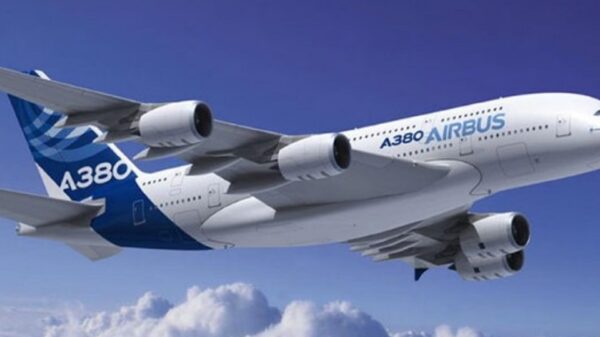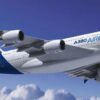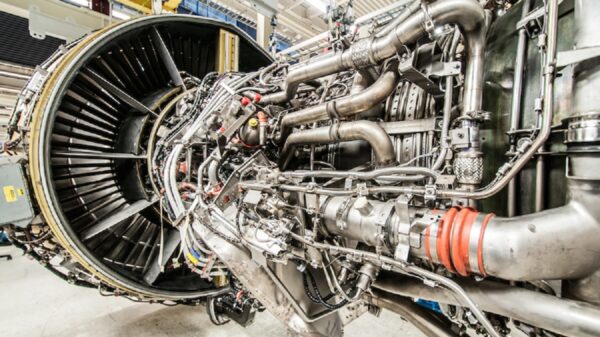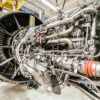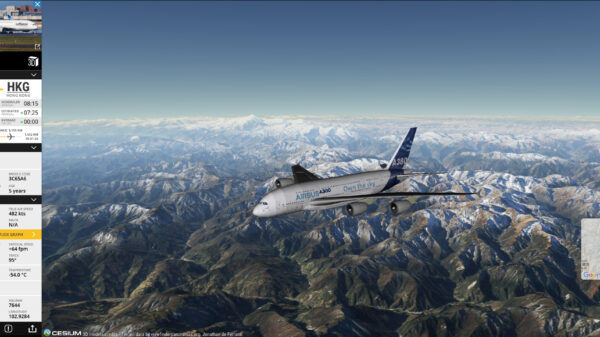The Boeing 787 and Airbus A350 are long-range, wide-body commercial aircraft used for international travel but differ in design, technology, and manufacture.
Here are some key distinctions between the two aircraft:
#1. Manufacturers
Boeing 787: The Boeing 787, also known as the Dreamliner, is manufactured by Boeing, an American aerospace company.
Airbus A350: The Airbus A350 is manufactured by Airbus, a European aerospace company.
#2. Design
Boeing 787: The 787 is primarily constructed using composite materials (carbon-fibre-reinforced composites), which makes it lighter and more fuel-efficient. It features large, electronically dimmable windows, and its cabin is pressurised to a lower altitude, providing a more comfortable passenger experience.
Airbus A350: The A350 also uses composite materials in its construction, with a significant portion of its airframe being made from carbon composites. It also features larger windows and a comfortable cabin environment with lower altitude and higher humidity levels.
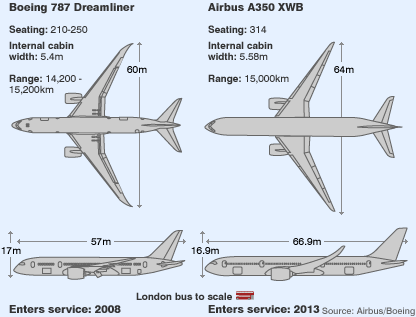
#3. Variants
Boeing 787: The 787 comes in two main variants, the 787-8 and 787-9, with the 787-10 being a stretched version of the 787-9. Boeing also developed the 787-3 variant, which was later cancelled.
Airbus A350: The A350 family includes several variants: the A350-900, A350-900ULR (Ultra Long Range), and A350-1000. Each variant is designed for different passenger capacities and ranges.
#4. Capacity
Boeing 787: Depending on the variant and seating configuration, the 787 can typically accommodate between 242 and 336 passengers in a two-class seating arrangement.
Airbus A350: The A350 can carry between 280 and 440 passengers in a typical two-class layout, depending on the variant.
#5. Range
Boeing 787: The 787 ranges from approximately 6,430 to 7,355 nautical miles (11,910 to 13,620 kilometres), depending on the variant.
Airbus A350: The A350 ranges from approximately 7,900 to 9,700 nautical miles (14,630 to 17,960 kilometres), depending on the variant.
#6. Cockpit
Boeing 787: The 787 features a common type rating with the older Boeing 777, which can be advantageous for airlines and pilots regarding training and certification.
Airbus A350: The A350 has a cockpit design that shares commonality with the Airbus A380, making it easier for pilots already trained on Airbus aircraft.
#7. Entry into Service
Boeing 787: The first Boeing 787 entered commercial service in 2011.
Airbus A350: The first Airbus A350 entered commercial service in 2013.
Conclusion
These are some of the main differences between the Boeing 787 and Airbus A350 aircraft. Airlines choose between them based on their specific operational needs and preferences for various features and capabilities.


